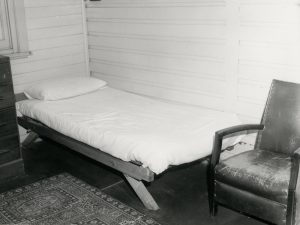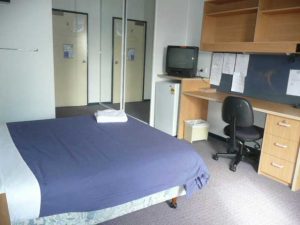HMAS Watson was commissioned in 1945 and continues today as the home of several important maritime warfare school for officers and sailors. Located on the South Head of Port Jackson (Sydney Harbour), its history includes the Australian heritage listed Barracks Group which incorporates Cliff House.
Early History
The First Fleet landing near South Head occurred at Camp Cove in 1788 when a group from HMS Sirius entered Port Jackson. There Captain Phillip said that this is one of the finest harbours in the world where 1,000 ships may safely anchor. A signal station was erected by 1791. Macquarie Lighthouse began operating in 1818 and its early superintendent was Robert Watson, after whom Watsons Bay became known.
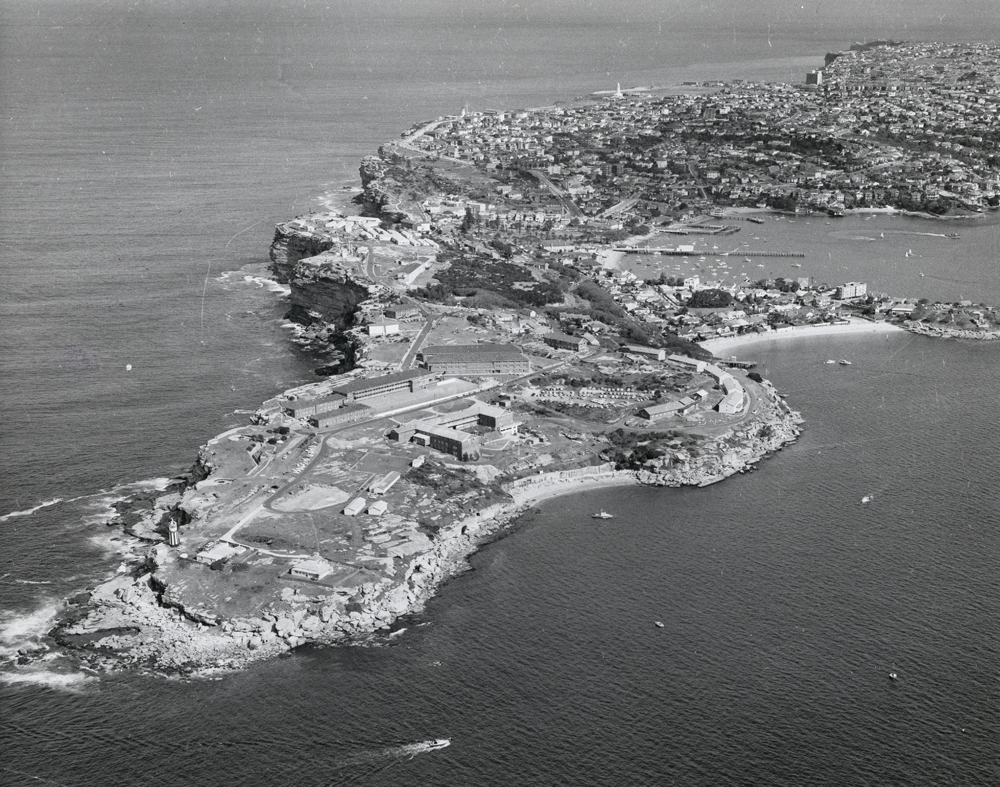
The need for defensive measures in the area was realised in 1839 when the first guns were installed. Fears of Russian and French attacks and the building of the government road towards South Head in the 1850s led to the building of gun emplacements, forts, and barracks for the artillerymen and officers.
The Barracks Group and Cliff House
The Barracks Group stands on a rocky, westward-facing slope above Sydney Harbour.
The first of the four surviving buildings in the Barracks Group, Cliff House, was constructed in 1876. It was originally a mess and barracks for single officers. By about 1881 it had been relocated and was probably reserved as accommodation for the Commanding Officer.
Second to be built was Building 33 A and B, in 1879-80. It was originally a barracks to house 50 men and was part of the gunnery school. In 1941 the building was used as a mess and administration block, then after 1952 it became a recreation centre. It then reverted to accommodation for married personnel and was divided into two residences. The third building to be erected was built 1891-93 and it served first as a barrack room and later as a sergeant’s mess. Since 1923 it has been mainly used as naval married quarters and is now the Naval Officer’s Residence. Building 25, the fourth building constructed, between 1899 and 1903, has been continually used as married quarters.
The South Head defence facilities were transferred to the Commonwealth in 1903. The barracks and forts were mobilised during the First World War, after which there was little change until the 1930s. The army remained at South Head until the 1970s although it retained some buildings, including Cliff House, until the early 1990s. In 1992 significant upgrades to all houses were carried out by the Defence Housing Authority.
HMAS Watson
In 1942 the Navy came to South Head, when the Navy RADAR School was moved from HMAS Rushcutter and renamed HMAS Radar. The Navigation and Direction School was added in 1944. The majority of staff at that time were RAN members with radio or radar qualifications, and many of the original complement were members of the Women’s Royal Australian Naval Service (WRANS). The Royal Australian Air Force (RAAF) also provided eleven officers and men.
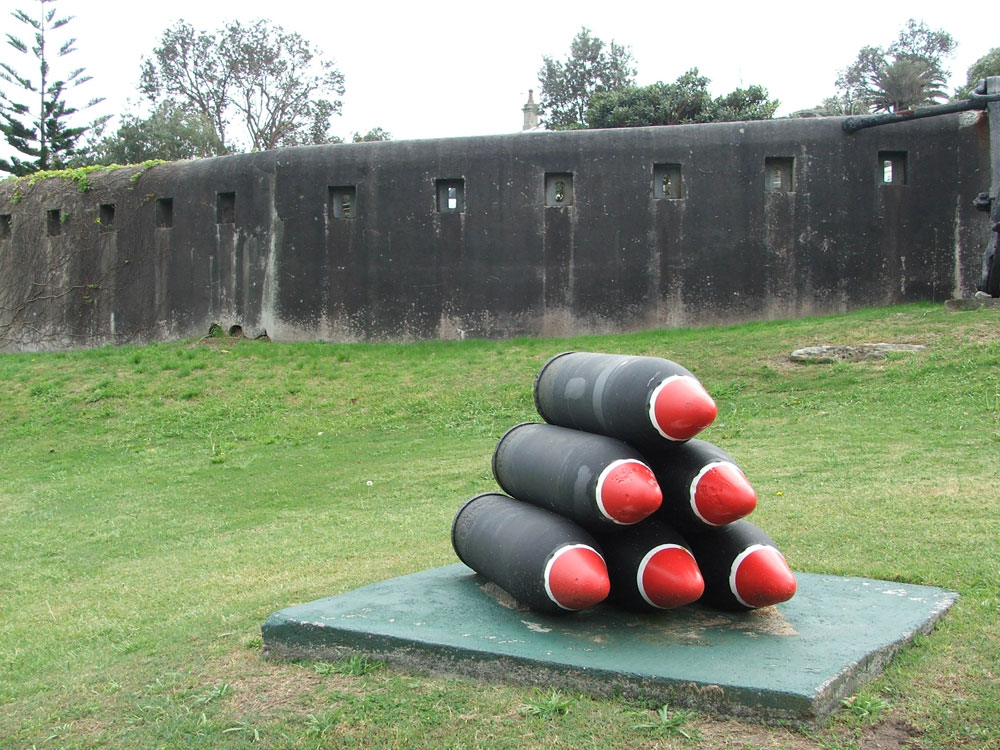
The comparatively high turnover of personnel at Watson, combined with a lack of facilities, made sporting competition difficult, but rugby union, Australian rules football, cricket and tennis teams were all formed in 1944, while a number of WRANS played hockey for Rushcutter.
On 14 March 1945 the South Head facility was commissioned as HMAS Watson, named not only after Watson’s Bay but also Sir Robert Watson-Watt, one of the inventors of radar.
More than 2200 RAN officers and men were trained at the School during the course of World War II. Many members of Allied navies and the merchant marine also received training.
Post war, near continuous developments in Watson’s training capabilities, accommodation and other support facilities included:
- becoming the primary training facility for Action Information Organisation (AIO) teams;
- from 1956, Torpedo and Anti-submarine (TAS) training, together with (until 1963) administration of the Clearance Diving Branch;
- Naval Reserve training and administration for the Sydney Port Division of the RANR (1966-74) and the Australian Sea Cadet Corps – NSW Division from 1966);
- accommodating the School of Advanced Cookery (1957-67) and its role of conducting trials on new equipment and ingredients, from powdered eggs to deep fryers and microwave ovens, to assess their suitability for the Navy;
- simulation training using a new Solartron Radar Simulator (1966);
- Explosive Ordnance Disposal (EOD) training within the Mine Warfare Section of the TAS School (1967);
- a Tactical Trainer Building, designed to house the new Action Information Organisation Tactical Trainer (AIOTT), the Tactical School and the Submarine Command Team Trainer (commissioned 1975 and later renamed re-named the Maritime Warfare Training Centre);
- a temporary Electronic Warfare Training Centre (1971);
- improvements to officers, senior sailors and junior sailors accommodation and recreational facilities in the early 1990s;
- a Submarine Warfare Systems Centre (SWSC) being operational between the early 1980s and 1996;
- in 1985, a bridge simulator operating to train junior officers in the duties of the Officer of the Watch, as well as other training functions such as continuation training up to command team levels;
- the establishment of the RAN Surface Warfare School in 1985, providing a similarly high standard of training for RAN surface combatants as the RAN’s submariners were receiving in the SWSC;
- acceptance of three Anzac Class training emulators (2002) and a wide area network of simulation training systems for use in the Coalition Readiness Management Sydney program (CReaMS).
By the 1980s, anywhere between 500 and 1,300 sailors could receive training at Watson per quarter.
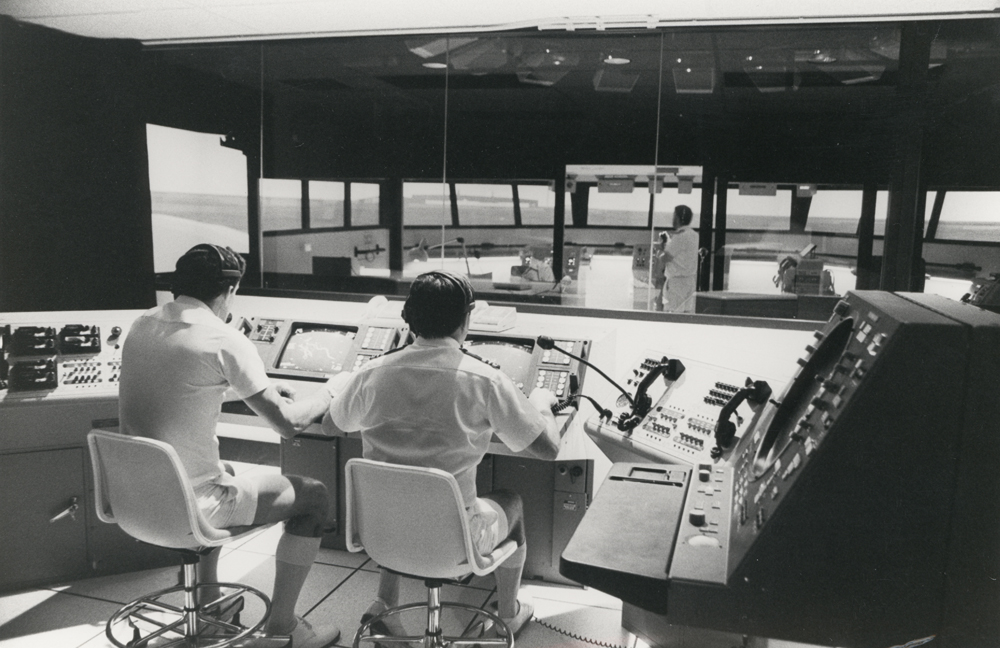
In addition to its training commitments, Watson, via the TAS School, also contributed to the pre-workup training and trials for ships of the RAN as well as some Commonwealth navies such as the RN and RNZN. Watson also sent trials teams to establishments all around the country to conduct trials in RAN ships in such diverse matters as Navigation and Direction, Mortar Calibration and Firing, Torpedo Discharge, SONAR and Harbour Acceptance Trials.
A diversion from Watson’s training role arose in the 1960s when the establishment became the main staging area for troops deploying to, and returning from, the war in Vietnam.
A feature of HMAS Watson is the inter-denominational Chapel of St George the Martyr, a memorial to all RAN personnel who have died in service. The Chapel’s foundation stone was laid on 30 April 1960 and dedicated by a boy known only as William, a ward of Legacy, whose father was a sailor who had given his life in World War II three months before William was born. He was chosen, and his anonymity preserved, as a symbolic representative for all those that had made the ultimate sacrifice as members of the RAN and associated services.

Stones from Christian shrines around the world, some dating back to the fifth century AD, can be found in the Chapel’s altar, together with stones from cathedrals in Sydney, Bathurst, Melbourne, Perth and Rockhampton. The wood-carved pulpit features a New Zealand Kea bird and was donated by the RNZN, while other items such as stone carvings and altar cloths were gifts from many different nations including the Netherlands and Malta.
Watson Bay locals attended Sunday services in the Chapel for more than 40 years; however, while the Chapel remains open to the public, Sunday services are no longer regularly conducted.
HMAS Watson has earned its reputation as a world class warfare training establishment. Its state-of-the-art facilities are, today, spread across nine departments and Watson is internationally recognised as offering some of the finest naval warfare training anywhere in the world. Watson now provides basic and advanced training for Junior and Senior Sailors in combat systems and Junior Seaman Officers in ship handling, navigation and tactics. Advanced training is conducted for Principal Warfare Officers and Force Warfare Officers. At the high end, Watson trains newly appointed Commanding and Executive Officers.

References
HMAS Watson History, Navy website
Barrack Group HMAS Watson, Australian Heritage Database
Cliff House, Australian Heritage Database
Further Reading
Captain Harvey Newcomb RN – Newcomb Building, HMAS Watson by Ray Worledge, published in the December 1998 edition of the Naval Historical Review
HMAS Watson’s Freedom of Entry Marks Sixty Years of Service, by Don Deakin-Bell, published in the March 2005 edition of the Naval Historical Review
